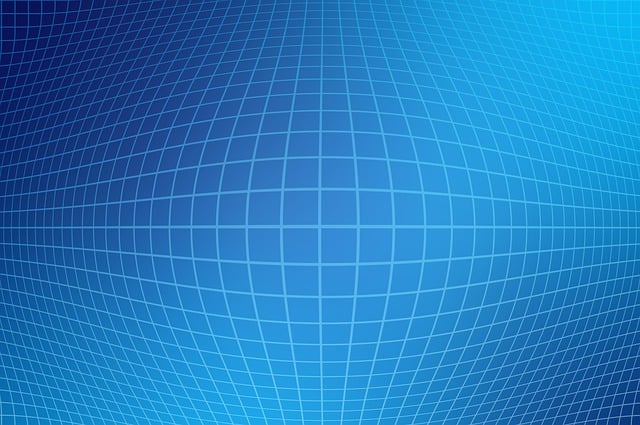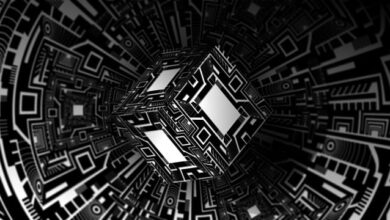3D Bioprinting: Building Organs and Tissues in the Lab


Imagine a world where organs and tissues can be created in a laboratory, revolutionizing the field of medicine. Well, that future is not as far-fetched as you might think. Thanks to the groundbreaking technology known as 3D bioprinting, scientists are inching closer to making this a reality.
What exactly is 3D bioprinting? It’s a cutting-edge technique that allows researchers to fabricate three-dimensional structures using living cells, biomaterials, and precise computer-aided design. Just like a regular 3D printer adds layer upon layer to create an object, a bioprinter deposits bioinks—cell-laden materials—to build complex biological structures.
The implications of this technology are staggering. Imagine a patient in need of an organ transplant. Instead of waiting for a donor match, doctors could potentially create a custom-made organ using the patient’s own cells. This eliminates the risk of organ rejection and reduces the need for lifelong immunosuppressive drugs.
Moreover, 3D bioprinting holds promise in the field of regenerative medicine. By printing scaffolds infused with cells, scientists can promote tissue regeneration in patients with injuries or degenerative diseases. This could mean repairing damaged cartilage, regrowing skin, or even restoring functionality to damaged nerves.
But how does 3D bioprinting actually work? The process begins with obtaining living cells from the patient or a cell bank. These cells are then mixed with a hydrogel or other biomaterials to create a bioink—a specialized ink that serves as the “building material” for the bioprinter. Using a computer-aided design file, the bioprinter precisely deposits the bioink layer by layer, creating a complex structure that mimics the desired organ or tissue.
It’s important to note that while 3D bioprinting has made significant strides, there are still challenges to overcome. The complexity of recreating functional organs with intricate vascular networks remains a considerable hurdle. Additionally, regulatory and ethical considerations must be carefully navigated to ensure the safe and responsible use of this technology.
However, despite these challenges, the potential of 3D bioprinting is awe-inspiring. It has the power to transform healthcare as we know it, offering hope to countless individuals in need of organ transplants or regenerative therapies. As scientists continue to push the boundaries of this field, we may witness a future where building organs and tissues in the lab becomes a routine part of medical practice.
Revolutionizing Medicine: Breakthroughs in 3D Bioprinting Bring Us Closer to Lab-Grown Organs
Have you ever wondered if it’s possible to create human organs in a laboratory? Well, thanks to groundbreaking advancements in 3D bioprinting, we are now closer than ever to achieving this extraordinary feat. Imagine a world where waiting lists for organ transplants become a thing of the past, where organs are custom-made for patients, and where the limitations of traditional transplantation are overcome. This is the promise that 3D bioprinting holds for the future of medicine.
So, what exactly is 3D bioprinting? It’s a cutting-edge technology that merges the fields of engineering, biology, and medicine. Using specialized printers and bio-ink made from living cells, scientists are able to create three-dimensional structures that mimic the complex architecture of human organs. These “bio-printed” organs have the potential to function just like their natural counterparts, offering hope to millions of patients in need of organ replacements.
One of the most exciting breakthroughs in 3D bioprinting is the ability to print vascular networks within the printed tissues. Blood vessels play a crucial role in delivering oxygen and nutrients to cells, and without them, larger tissues would struggle to survive. By successfully integrating blood vessel networks into printed organs, scientists have taken a significant step towards creating viable lab-grown organs that can sustain life.

Moreover, 3D bioprinting allows for the precise placement of different cell types within the printed structures. This means that not only can the overall shape and structure of an organ be replicated, but specific cell types can also be strategically positioned to ensure proper functionality. For example, in the case of a printed heart, cardiac muscle cells can be placed in a way that mimics the natural arrangement of the heart tissue, improving its ability to contract and pump blood effectively.
While there are still numerous challenges to overcome before lab-grown organs become a reality for clinical use, the breakthroughs in 3D bioprinting have sparked tremendous excitement and hope within the medical community. The potential benefits are immeasurable – from reducing organ shortages and eliminating transplant rejections to providing personalized treatments and even serving as platforms for drug testing.
The field of 3D bioprinting is revolutionizing medicine and bringing us closer to the era of lab-grown organs. With each new breakthrough, scientists are pushing the boundaries of what is possible and inching towards a future where life-saving organs can be created in a laboratory. It’s an awe-inspiring journey that promises to transform the landscape of healthcare and improve the lives of countless individuals worldwide.
Printing Life: How 3D Bioprinting is Transforming the Field of Organ Transplants
Imagine a world where life-saving organs are no longer in short supply, where patients on transplant waiting lists have hope instead of uncertainty. Thanks to groundbreaking advancements in technology, this vision is becoming a reality through the revolutionary field of 3D bioprinting. By harnessing the power of innovation, scientists are reshaping organ transplantation as we know it.
Traditional organ transplants often face significant challenges, such as the scarcity of suitable donors and the risk of rejection by the recipient’s immune system. However, 3D bioprinting has emerged as a promising solution to these obstacles. This cutting-edge technique involves the precise layer-by-layer deposition of living cells to create functional, three-dimensional organs. By using a bioink composed of living cells, scientists can fabricate organs that closely mimic the structure and function of natural human organs.
The potential impact of 3D bioprinting on organ transplantation is nothing short of astounding. One of the most significant advantages is the ability to generate organs on-demand, alleviating the burden on traditional donor-based systems. Imagine a scenario where a patient can receive a custom-made organ specifically tailored to their unique needs. This personalized approach dramatically reduces the risk of rejection and opens doors for transplant options previously deemed impossible.
Moreover, 3D bioprinting holds immense promise for regenerative medicine. With the ability to print intricate blood vessel networks and complex tissue structures, scientists can engineer organs that are not only functional but also capable of self-healing. This breakthrough technology could potentially eliminate the need for long-term immunosuppressive drug therapies, improving the quality of life for transplant recipients.

While 3D bioprinting is still in its infancy, remarkable progress has been made in recent years. Researchers have successfully printed various tissues, including skin, cartilage, and even small-scale functional organs like the liver and heart. However, challenges remain, such as the printing of large-scale solid organs and ensuring long-term viability.
3D bioprinting is revolutionizing the field of organ transplants by offering a transformative solution to the scarcity of donor organs and the risk of rejection. This groundbreaking technology has the potential to reshape healthcare, providing hope for countless individuals in need of life-saving transplants. As scientists continue to push boundaries and overcome challenges, we may soon witness a future where organ shortages are a thing of the past, and every life can be printed anew.
From Sci-Fi to Reality: The Rise of 3D Bioprinting and the Promise of Customized Organs
Introduction:
Imagine a world where damaged organs can be replaced with customized, tailor-made solutions. It may sound like science fiction, but thanks to the remarkable advancements in 3D bioprinting, this futuristic dream is becoming a reality. In this article, we will explore the incredible rise of 3D bioprinting technology and delve into the promising prospects it holds for personalized organ transplantation.

The Marvels of 3D Bioprinting:
At its core, 3D bioprinting is a revolutionary technology that combines engineering, biology, and medicine to create living tissues, and potentially even whole organs, layer by layer. Similar to traditional 3D printing, it employs a computer-guided process that deposits bioinks containing living cells onto a scaffold, gradually building complex structures with astonishing precision.
Customization at Its Finest:
One of the key advantages of 3D bioprinting lies in its ability to produce organs tailored to individual patients. This means that the days of long waiting lists for organ transplants could soon become a thing of the past. By using a patient’s own cells as a basis, scientists can develop organs that are less likely to be rejected by the immune system, ultimately increasing the success rates of transplant procedures.

Revolutionizing Medical Research:
Beyond the realm of transplantation, 3D bioprinting is transforming medical research. Scientists can now create accurate replicas of human organs for testing new drugs, making the drug discovery process faster, more efficient, and less reliant on animal testing. This technology also provides a unique platform for studying diseases and developing targeted treatments, leading to groundbreaking advancements in personalized medicine.
Overcoming Challenges:
Despite the astounding progress made in this field, challenges remain. Ensuring the functionality and vascularization of printed organs, scaling up production, and addressing ethical considerations are among the hurdles that scientists and researchers are actively working to overcome. However, the potential benefits of 3D bioprinting far outweigh these challenges, propelling the field forward with unwavering determination.
Conclusion:
The rise of 3D bioprinting marks a significant step towards a future where organ shortages are no longer a life-or-death issue. As science fiction turns into reality, the promise of customized organs brings hope to millions of patients worldwide. With continued advancements in technology and growing interdisciplinary collaborations, we can anticipate a world where 3D bioprinted organs become commonplace, revolutionizing healthcare and saving countless lives along the way.
Building a Better Future: Scientists Master 3D Bioprinting Techniques for Complex Tissue Structures
Are you ready to be amazed? Scientists have taken a giant leap forward in the field of biotechnology with their groundbreaking achievement: mastering 3D bioprinting techniques for complex tissue structures. This remarkable advancement is paving the way for a better future, revolutionizing the fields of medicine, transplantation, and even cosmetic surgery.
Imagine a world where damaged organs can be replaced with perfectly tailored and functioning replicas, where waiting lists for organ transplants are a thing of the past. Thanks to 3D bioprinting, this dream is becoming a reality. Using specialized printers, scientists can now create intricate tissue structures layer by layer, mimicking the complexity of natural organs.
The implications of this breakthrough are truly mind-boggling. Not only can 3D bioprinting offer hope to patients in need of organ transplants, but it also opens up new avenues for research. Scientists can now study diseases and test potential treatments on realistic 3D models, reducing the reliance on animal testing and accelerating medical discoveries.
But how does 3D bioprinting actually work? Well, think of it as a high-tech version of your office printer. Instead of ink, these printers use bioinks, which are made from living cells suspended in a gel-like substance. These bioinks can be precisely deposited onto a scaffold, building layer upon layer until a complete tissue structure emerges. It’s like constructing a complex architectural masterpiece, but on a microscopic level.
The beauty of 3D bioprinting lies in its versatility. It can be used to create not only simple tissues like skin or cartilage but also more intricate structures such as blood vessels or even entire organs. The possibilities are staggering. Researchers are already experimenting with printing functional liver tissue and heart valves, inching closer to the day when we can produce fully functional organs on demand.
As with any groundbreaking technology, there are still challenges to overcome. Ensuring the survival and integration of these 3D-printed tissues within the human body remains a major hurdle. Scientists are diligently working on refining their techniques and optimizing the bioinks to enhance cell viability and promote proper tissue development.
The mastery of 3D bioprinting techniques for complex tissue structures is an awe-inspiring achievement that holds immense promise for the future. It has the potential to transform healthcare as we know it, offering hope to countless patients in need of organ transplants and revolutionizing medical research. With continued advancements and ongoing research, we are building a better future where the impossible becomes possible, one printed tissue at a time.




